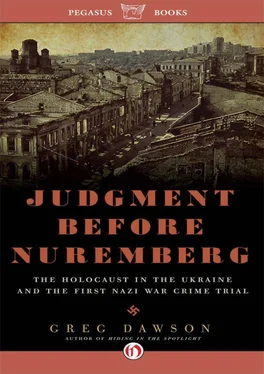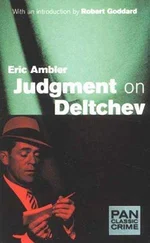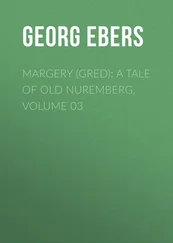“Even at this early date, the Soviet government plainly sought to stake out a claim imputing ‘all the responsibility for these inhuman actions of the German military and civil authorities on the criminal Hitlerite government,’” wrote George Ginsburgs. “The all-enmeshing web of criminal conspiracy which eventually stretched to embrace the entire Nazi system, directly implicating men at the summit of official hierarchy as accomplices in the misdeeds committed by the lower echelons, figured prominently in the Soviet government’s public pronouncements well-nigh from the start.” [2] George Ginsburgs, Moscow’s Road to Nuremberg: The Soviet Background to the Trial (Kluwer Law International, The Netherlands, 1996), 31–32.
On January 6, 1942, as Nazis were throwing dirt on the bodies at Drobitsky Yar, Molotov issued a laundry list of “monstrous atrocities” committed by the occupiers, and once again carefully connected the dots from killers on the ground to their masters in Berlin. “Irrefutable facts prove that the regime of plunder and bloody terror against the non-combatant population of towns and villages constitutes not merely excesses of individual German officers and soldiers, but a definite system planned and encouraged by the German government and the German High Command, which deliberately foster the most brutal instincts among soldiers and officers,” he stated.
Molotov’s notion of shared, prosecutable guilt—“from the lance-corporal in the army to the lance-corporal on the throne,” as Soviet legal expert Aaron Trainin put it—was endorsed just a week later by representatives of nine occupied countries meeting in London at the Palace of Saint James. The governments in exile vowed “the punishment, through channels of organized justice, of those guilty or responsible for these crimes, whether they have ordered them, perpetrated them, or in any way participated in them.”
With the declaration at Saint James, the idea of collective culpability “took root… in the diplomatic canon of an important segment of the international community,” Ginsburgs wrote. “The concept that a general blueprint drawn up by the state and party hierarchy of the Third Reich accounted for the epidemic proportion of depravities perpetrated by the middle and lower echelons of the Nazi apparatus was destined eventually to emerge as a key theme in the Nuremberg script.” [3] Ginsburgs, Moscow’s Road to Nuremberg , 34.
Molotov was as assiduous in documenting the Nazis’ crimes as they were in committing them, Ginsburgs wrote. In April 1942, Molotov “returned to the fray with further evidence that the German army was engaged in methodical looting, plunder, and criminal excesses against the civilian population, wanton destruction of towns and villages, enslavement and deportation of civilians, their mass arrest and confinement in P.O.W. camps, destruction of national cultures and all manner of bestialities encouraged on direct orders of superior officers.”
The instinctive reaction of the contemporary reader, bombarded and often burned by hoax and hyperbole, is to cast a skeptical eye at such apocalyptic language and divide by two to get the truth. In this case, however, you need to multiply. Not only were Molotov’s accusations true, his words failed to convey the full dimension of the horror unfolding across the Soviet Union. It can be seen in the records of the Extraordinary State Commission for Ascertaining and Investigating Crimes Perpetrated by the German Fascist Invaders and their Accomplices (ESC), created in November 1942 to “keep complete records of the vile crimes perpetrated by the Germans and their accomplices.” The commission inspected graves and corpses, took witness accounts, studied forensic reports, and interviewed captured Germans. It acquired Nazi maps, books, private correspondence, diaries, memoirs, and transcripts of speeches at Reichstag sessions.
“These records proved indispensable at the IMT,” wrote Michael Bazyler, a law professor and expert on international law. And well before the IMT, they would prove indispensable in the Ukraine as the Soviets paved the way to Nuremberg. The first use of the material was in July 1943, when eleven Soviet citizens were charged with treason for collaborating with German forces in the murder of six thousand people in Krasnodar in southeastern Ukraine in 1942. But there was something curious about these litanies of Nazi atrocities: the primary victims, Jews, were not identified as such. Although they were in large measure the very reason the Germans were there, and were the main quarry of the Einsatzgruppe squads that did the killing, Jews appeared only as “Soviet citizens” or “peaceloving citizens” in ESC reports on massacres in Krasnodar, Kharkov, and myriad sites across Ukraine.
“In testimonies gathered by the local committees in each town… local inhabitants recalled events they had witnessed,” Arad wrote. “They described the persecution and murder of the Jews, as they saw and heard them. The testimonies were written down verbatim, and clearly included the word Jews as the main victims. In reports provided by the local commissions, however, the word Jews disappeared gradually, to be replaced by the term Soviet citizens .” [4] Arad, The Holocaust in the Soviet Union , 540.
Though no Germans were in the dock at Krasnodar, the proceeding clearly was a trial in absentia of the Nazis. Prosecutors assigned responsibility to the commander of the German 17th Army, the chief of the Krasnador Gestapo, and thirteen other Gestapo officials. Eight of the defendants were sentenced to death by hanging, the others to hard labor or deportation.
In October 1943, U.S. Secretary of State Cordell Hull and British Foreign Secretary Anthony Eden met in Moscow with Soviet Foreign Minister V.M. Molotov to discuss a variety of issues. With the German army in full retreat from Soviet territory, Stalin’s attention turned to vengeance in the courtroom—and it turned with a keen vengeance that bespoke the Soviets’ exponentially greater degree of suffering to that point in war. By October 1943—eight months before D-Day and the other major conflicts of the European theater to follow—rivers of blood already were running through the Soviet Union. Hundreds of thousands of Russian soldiers had died defending Moscow and Stalingrad and in the epic tank battle at Kursk. In the siege of Stalingrad alone, the Soviets lost nearly 480,000 men—more than all American losses for the war. It’s estimated that for every American soldier killed fighting the Germans, eighty Soviet soldiers died. Millions of Russian civilians had died, including close to 1.5 million Jews systematically murdered in Ukraine.
“Americans have little conception of the Soviet Union’s experience in World War II,” wrote J.T. Dykman in a paper for The Eisenhower Institute. “About the only way we can begin to understand is through imagination. The distance between Moscow and Berlin is about the same as that separating New York City and Atlanta. Imagine twenty million people being violently killed between those two American cities in four years.” In his memoir, Eisenhower attempted to describe the unfathomable destruction. “When we flew into Russia, in 1945, I did not see a house standing between the western borders of the country and the area around Moscow.” [5] J.T. Dykman, “The Soviet Experience in World War Two” (paper presented at The Eisenhower Institute, 2002).
The documented horror explains Stalin’s focus on harsh legal remedy when he met with Churchill and Roosevelt in October 1943. Edmund Stevens wrote in the Christian Science Monitor : “The Russians insisted on a declaration concerning the punishment of individuals responsible for German atrocities in the occupied areas. The Russians contended that the category of such war criminals embraced everyone from the Nazi higher-ups who issued the directive for extermination… down to the meanest Wehrmacht private who mowed down unarmed civilians with a machine gun, or used his bayonet in gruesome fulfillment of the directives.”
Читать дальше












